
Middle Franconia is one of the three administrative regions of Franconia in Bavaria, Germany. It is located in the west of Bavaria and borders the state of Baden-Württemberg. The administrative seat is Ansbach; however, the most populous city is Nuremberg.
Roth is a Landkreis (district) in Middle Franconia, Bavaria, Germany. It is bounded by the districts of Nürnberger Land, Neumarkt, Eichstätt, Weißenburg-Gunzenhausen, Ansbach and Fürth, and the cities of Schwabach and Nürnberg.

Weisendorf is a municipality in the district of Erlangen-Höchstadt, in Bavaria, Germany. It belongs to the administrative region of Middle Franconia.

Roßtal is a market town in the district of Fürth, Bavaria, Germany. As of 2020 it had a population of 10,127. It has a primary school and a secondary school. The church is named St. Laurentius and was built from 1025 to 1042.

Abenberg is a town in the Middle Franconian district of Roth, in Bavaria, Germany. It is situated 9 km west of Roth bei Nürnberg and 25 km southwest of Nuremberg.

Herrieden is a town in the district of Ansbach and situated in the Middle Franconia region of Bavaria, Germany. It lies along the upper Altmühl river, about 9 km (6 mi) southwest of the city of Ansbach, 47 km southwest of the city of Nürnberg, 95 km east of Heilbronn and 144 km northwest of Munich.

Merkendorf is a town and municipality in the district of Ansbach, in Bavaria, Germany. It is situated 14 km southeast of Ansbach.

Wassertrüdingen is a town in the district of Ansbach, Middle Franconia, Bavaria, Germany. It is between the Hesselberg, the only Franconian mountain with a view on the Alps, the wooded heights of the Oettinger Forest and the foothills of the Hahnenkamm. The Fränkisches Seenland recreation area is 15 kilometers away. Altentrüdingen, Fürnheim, Geilsheim, Obermögersheim, Reichenbach und Schobdach are part of Wassertrüdingen
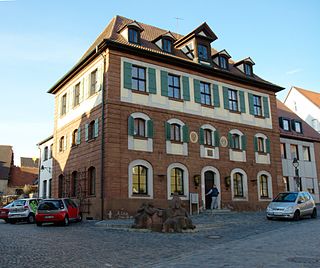
Windsbach is a town in the district of Ansbach, in Bavaria, Germany. It is situated 20 km east of Ansbach, and 29 km southwest of Nuremberg.
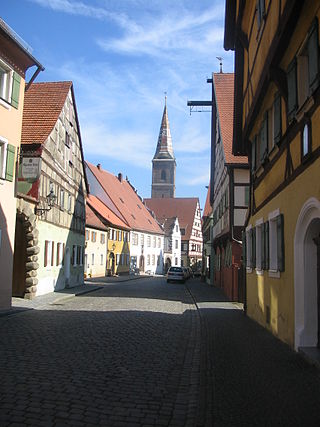
Wolframs-Eschenbach is a town in the district of Ansbach, in Bavaria, Germany. It is situated 14 km southeast of Ansbach, and 36 km southwest of Nuremberg.

Lichtenau is a market town in the district of Ansbach, Middle Franconia, Bavaria, Germany. A small village/town of roughly 3,780 population on the “Castle Road” theme route of Southern Germany. It lies at 390 meters above sea level with an area of 41.39 km². A very traditional little town, it is also home to the “Veste Lichtenau” (castle) which now houses the Nuremberg Archives.

Neuendettelsau is a local authority in Middle Franconia, Germany. Neuendettelsau is situated 20 miles southwest of Nuremberg and 12 miles east of Ansbach. Since 1947 it has a Lutheran seminary.

Bruckberg is a municipality in the district of Ansbach in Bavaria in Germany.

Colmberg is a municipality in the district of Ansbach in Bavaria in Germany. Colmberg is the site of Colmberg Castle, built in the 13th century and purchased in 1318 by Duke Frederick IV of Nuremberg. The town is located in Nature Park Frankenhöhe.

Ehingen is a municipality in the district of Ansbach in Bavaria in Germany.
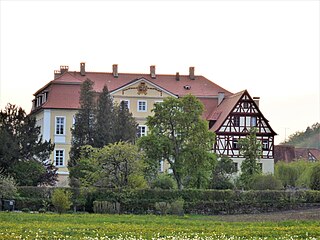
Rügland is a municipality in the district of Ansbach in Bavaria in Germany.
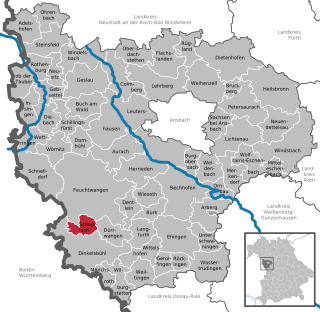
Schopfloch is a municipality in the district of Ansbach in Bavaria in Germany. It is the home of Lachoudisch, a rare Hebrew-infused German dialect.
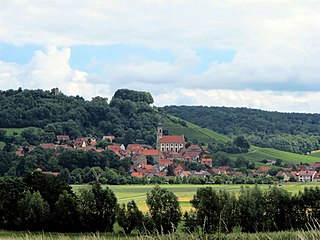
Castell is a municipality in the district of Kitzingen in Bavaria in Germany. It was the seat of the Counts of Castell. Today it is part of the municipal association Wiesentheid. It has around 800 inhabitants.
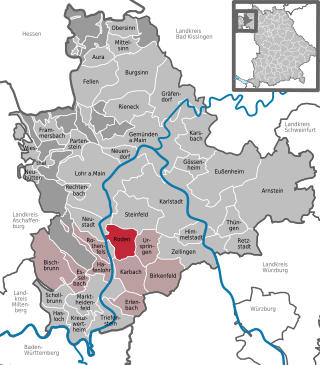
Roden is a community in the Main-Spessart district in the Regierungsbezirk of Lower Franconia (Unterfranken) in Bavaria, Germany and a member of the Verwaltungsgemeinschaft of Marktheidenfeld.
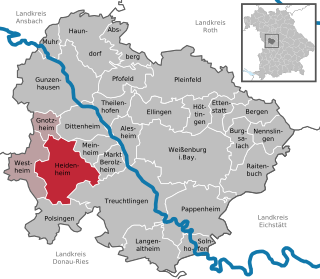
Heidenheim is a municipality in the Weißenburg-Gunzenhausen district, in Bavaria, Germany.























